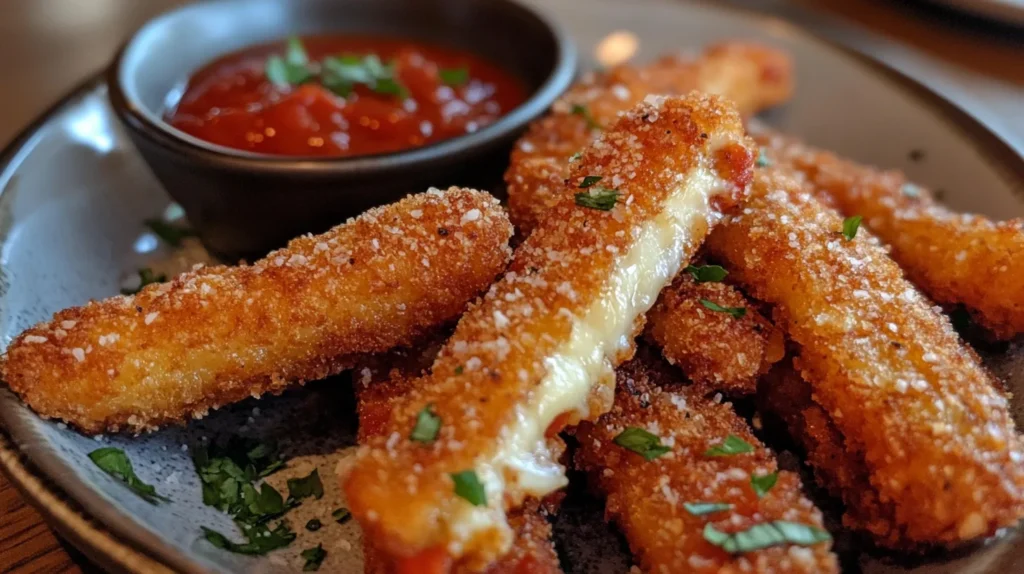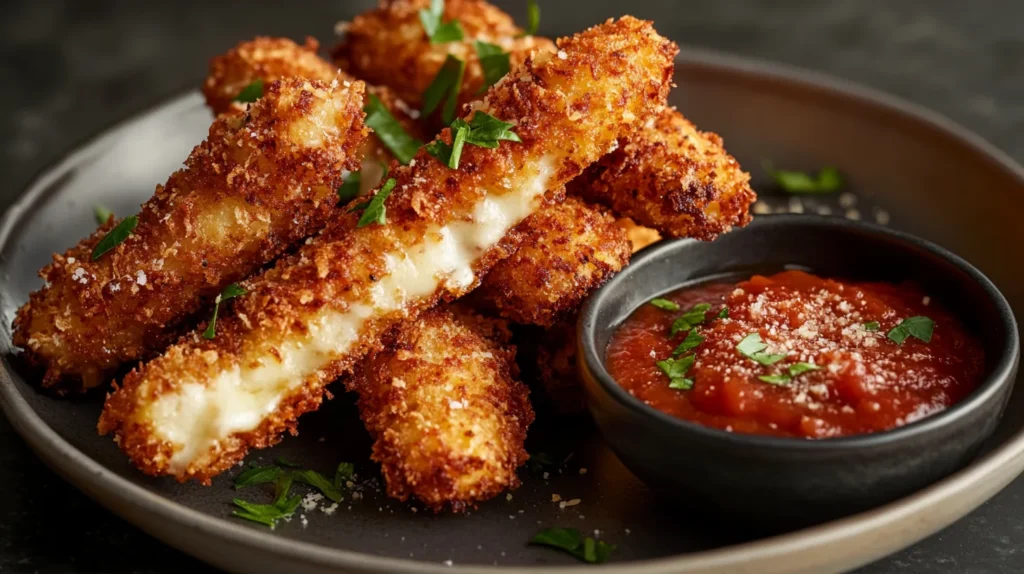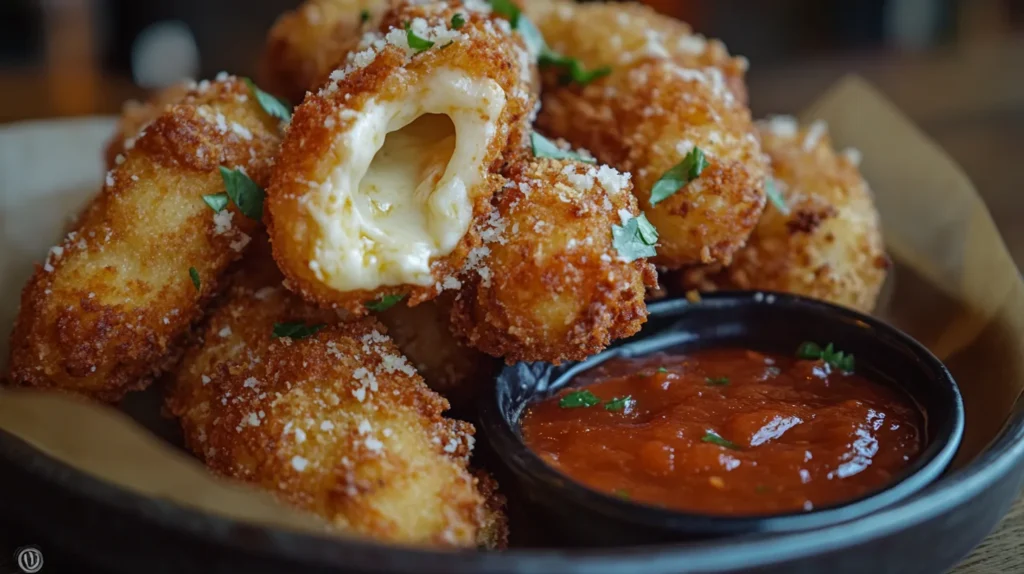Cheese and Stick: Irresistible Recipes and Snack Ideas
Cheese and Stick is a delightful combination that tantalizes the taste buds and sparks creativity in the kitchen. This unique pairing of flavors offers a world of culinary possibilities that can elevate both casual snacking and gourmet dining experiences. Exploring the intricacies of cheese varieties alongside the versatility of stick-based foods opens up an exciting realm for food enthusiasts to enjoy.
The Delightful World of Cheese and Stick
The world of cheese is vast and varied, with countless types and flavors emerging from different regions and cultures. Understanding the nuances of cheese not only enriches our culinary experiences but also allows us to appreciate the art of cheese-making. When combined with stick-based foods, such as breadsticks or vegetable sticks, the resulting dish can be both satisfying and delicious.
In this section, we will delve deeper into the origins, varieties, and processes associated with cheese, setting the stage for how it beautifully merges with stick-based creations to deliver unforgettable flavors.
The History of Cheese
The history of cheese is a fascinating journey that dates back thousands of years. It is believed that cheese-making began around 8000 B.C., coinciding with the domestication of sheep and goats. Early civilizations discovered that milk could be preserved through fermentation, leading to the creation of various cheese forms.
Over centuries, different cultures adapted their cheese-making techniques based on local ingredients and climate conditions. From the crumbly feta of Greece to the rich brie of France, each region developed its style, contributing to the global tapestry of cheese we know today.
The ancient Egyptians even had their version of cheese, as documented in hieroglyphics, while the Romans popularized cheese consumption across Europe. This historical significance gives cheese a revered status in many cultures, making it more than just a food item; it is often celebrated in festivals and gatherings.
Types of Cheese: An Overview
There are over a thousand distinct types of cheese worldwide, categorized based on factors such as texture, flavor, aging process, and milk source. Broadly classified, we can find:
- Fresh cheeses, which are simple, surface-ripened cheeses like mozzarella and ricotta.
- Soft cheeses, such as camembert and goat cheese, characterized by their creamy textures.
- Semi-soft cheeses like gouda and havarti offer a balance between creaminess and firmness.
- Hard cheeses, including cheddar and parmesan, are aged longer for intense flavors.
- Blue cheeses, like Roquefort and gorgonzola, contain mold cultures that provide a strong, pungent taste.
Exploring these types of cheese reveals a spectrum of flavors and textures, allowing us to create diverse culinary experiences. Each cheese brings its personality to the plate, creating endless opportunities for pairing with stick-based foods.
Regional Cheese Varieties
The regional diversity of cheese is astounding, with every country boasting its signature cheese varieties. For instance, Italy is well-known for its Parmigiano-Reggiano and pecorino Romano, while countries like Switzerland present us with their famous Emmental and Gruyère cheeses. France, the undisputed champion of cheese variety, offers a plethora of options ranging from rich and buttery Brie to sharp and tangy Roquefort.
Each region’s specific climate, flora, and fauna contribute significantly to the unique characteristics of its cheese. For example, the lush pastures of the Swiss Alps yield rich dairy products, whereas the warm Mediterranean climate influences the production of softer cheeses. The geographic influence transforms cheese-making into a genuine reflection of culture and locale, offering food lovers a passport to global flavors.
The Cheese-Making Process
The cheese-making process itself is an intricate blend of science and art, requiring skill, patience, and a deep understanding of the ingredients involved. At its core, cheese is produced by coagulating milk to separate curds (solid) from whey (liquid).
The basic steps include:
- Milk Selection: Choosing high-quality milk is crucial, whether it comes from cows, sheep, or goats.
- Coagulation: Rennet or an acid is added to the milk to initiate curd formation. The type of coagulant influences the final cheese texture and flavor.
- Curd Processing: The curds are cut, heated, and stirred to release whey. Depending on the cheese type, this may involve further aging or pressing.
- Aging: Many cheeses develop their final flavors and textures during aging, where environmental factors like humidity and temperature play critical roles.
This meticulous process is what makes cheese a truly artisanal product, deserving of appreciation. With such a vast array of cheeses available, the possibilities for creating Cheese and Stick dishes are limited only by one’s imagination.

The Concept of “Stick” in Culinary Context
When we talk about “stick” in culinary terms, we typically refer to foods that have a cylindrical or elongated shape. These could be derived from vegetables, breads, or even meats. The concept of stick-based foods adds a fun dimension to meals, encouraging interactive eating, ideal for sharing and snacking.
This section aims to explore the definition and usage of “stick” in food, highlight popular stick-based foods, and discuss their nutritional aspects.
Definition and Usage of “Stick” in Food
In the culinary world, “stick” refers to elongated pieces of food that are easy to handle and consume. They add a tactile element to dining, facilitating social interaction, especially when paired with dips or spreads.
For instance, vegetable sticks, like carrot or celery sticks, provide a nutritious crunch that can complement a variety of dips, while breadsticks serve as an excellent accompaniment to cheese platters. The versatility of stick-shaped foods makes them suitable for appetizers and snacks, enhancing communal dining experiences.
From a presentation perspective, stick-based foods lend themselves well to creative plating, allowing chefs to showcase vibrant colors and textures. This visual appeal can make a dish more enticing, drawing attention to the carefully curated cheese and stick combinations on offer.
Popular Stick-Based Foods
Stick-based foods span a wide range, catering to diverse tastes and preferences. Some popular examples include:
- Vegetable Sticks: Carrots, cucumbers, peppers, and zucchini can all be cut into sticks, serving as a healthy base for dips like hummus, ranch dressing, or tzatziki.
- Breadsticks: These crispy delights can be flavored with garlic, herbs, or cheese, making them a fantastic vehicle for conveying the richness of cheese.
- Meat Sticks: Jerky or sausage sticks add protein to the mix and can pair well with cheeses that balance their robust flavors.
- Cheese Sticks: Naturally, cheese itself can take the form of sticks. String cheese or cheese curds provide a playful twist on the classic cheese experience.
Each of these stick-based foods can be creatively combined with cheese to elevate flavor profiles, making the Cheese and Stick combination both exciting and satisfying.
Nutritional Aspects of Stick Foods
While stick-based foods may often be viewed as indulgent snacks, many can be nutritious additions to one’s diet. For instance, vegetable sticks provide essential vitamins, minerals, and fiber while being low in calories. Pairing them with cheese allows for increased satiety, thanks to the protein and fat content found in cheese.
However, moderation is key. Breadsticks, particularly those made from refined flour or laden with butter, can lead to higher calorie intake if consumed excessively. On the other hand, whole-grain varieties offer more fiber and nutrients.
When considering meat sticks, quality matters. Opt for jerky made without artificial additives and preservatives. Combining them with lower-fat cheeses can help maintain a balanced snack option.
Ultimately, understanding the nutritional elements of stick-based foods enhances our appreciation for them and encourages mindful eating practices.
The Perfect Pairing: Cheese and Stick
Having explored the alluring world of cheese and the appealing concept of stick-based foods, it’s time to focus on how they come together harmoniously on the plate. The fusion of cheese and stick creates a delightful culinary adventure, brimming with complementary flavors and innovative presentations.
In this section, we will discuss complementary flavors and textures, creative ways to combine cheese and stick, and suggest some perfect pairings for cheese and stick dishes.
Complementary Flavors and Textures
When pairing cheese with stick-based foods, it’s essential to consider how their flavors and textures work together. Creamy cheeses, such as brie or goat cheese, can contrast wonderfully with the crunch of vegetable sticks or the crispness of breadsticks.
Likewise, sharper cheeses like aged cheddar can bring out the sweetness in roasted vegetable sticks, creating a delightful balance. The interplay between soft and hard textures can excite the palate, making each bite a new adventure.
Moreover, herb-infused cheeses can elevate the taste profile of simple stick foods. Imagine dipping your breadsticks into a herbed cream cheese spread; the freshness of the herbs mingling with the savory depth of the cheese creates a delightful dance of flavors.
Creative Ways to Combine Cheese and Stick
There are numerous imaginative ways to combine cheese and stick, offering something for everyone. Here are a few suggestions:
- Cheese-Stuffed Vegetable Sticks: Hollow out bell peppers or cucumber sticks and fill them with a mixture of cream cheese and herbs. This refreshing bite combines crunch and creaminess, perfect for summer gatherings.
- Cheesy Breadsticks: Prepare homemade breadsticks infused with shredded cheese and herbs. Serve them warm, straight from the oven, accompanied by marinara sauce for dipping. This cheesy twist on a classic recipe is sure to impress.
- Charcuterie Boards: Create a stunning charcuterie board featuring various cheeses alongside vegetable and breadsticks. Add a selection of dips, nuts, fruits, and cured meats to enhance the experience.
- Skewers: Assemble skewers with cubes of cheese, cherry tomatoes, and veggie sticks. This portable option is great for picnics or outdoor events, combining convenience and flavor.
These ideas can spark inspiration for anyone looking to explore the delightful union of cheese and stick in their culinary endeavors.
Pairing Suggestions for Cheese and Stick Dishes
To elevate your cheese and stick creations, here are some expert pairing suggestions:
- Mozzarella with Cucumber Sticks: The mild creaminess of mozzarella complements the crispness of fresh cucumber, enhancing the refreshing experience.
- Cheddar with Carrot Sticks: The sharpness of aged cheddar pairs beautifully with sweet and crunch carrot sticks, providing a satisfying contrast.
- Blue Cheese with Celery Sticks: The bold flavor of blue cheese contrasts dramatically with the crispness of celery, creating a distinctive taste sensation.
- Goat Cheese with Breadsticks: The tangy flavor of goat cheese works wonderfully with the crunch of breadsticks, especially when drizzled with honey or balsamic glaze for an additional layer of flavor.
By exploring these pairing suggestions, you can create memorable cheese and stick dishes that resonate with your guests and family alike.

Cheese and Stick in Different Cultures
The combination of cheese and stick resonates across various cultures, each bringing its unique spin to this appealing pairing. Traditional cheese dishes from around the globe showcase the importance of this duo while highlighting the innovation emerging in modern cuisines.
This section will explore traditional cheese dishes, innovative recipes from various cuisines, and celebrations or festivals emphasizing cheese and stick.
Traditional Cheese Dishes Across the Globe
Many cultures have embraced cheese as a staple, creating iconic dishes that celebrate its flavors in conjunction with stick-based foods.
In Italy, for example, Frittata con Formaggio e Verdure features a delicious cheesy omelet filled with sautéed vegetable sticks. It’s a favorite among locals, enjoyed both for breakfast and as a hearty snack.
In Mexico, Quesadillas are crafted using tortillas filled with melted cheese and often served with salsa or guacamole for dipping. While not strictly “stick” in shape, they embody the spirit of delicious handheld food.
Across Eastern Europe, Cheese Pirozhki are stuffed pastries filled with cheese and sometimes vegetables, baked until golden brown. These delightful bites capture the essence of cheese and stick while showcasing the unique culinary traditions of the region.
Such dishes not only celebrate the flavors of cheese but also reflect the cultural heritage of their origin, creating a rich dining experience.
Innovative Cheese and Stick Recipes from Various Cuisines
Culinary innovation has continued to evolve, leading to exciting new recipes that merge cheese and stick in creative ways.
In Asia, fusion cuisine has taken off, leading to inventive dishes like Cheese-stuffed Spring Rolls. These crispy rolls are filled with savory cheese, vegetables, and spices before being fried to perfection.
In the Middle East, Cheese Kebab Sticks blend spices and ground meats with cheese, grilled on skewers for a flavorful meal. This dish highlights the versatility of cheese across global flavors.
Furthermore, American cuisine embraces the classic Cheese and Pretzel Stick Combo, where warm pretzel sticks are served alongside gooey cheese dip—a match made in indulgent heaven!
These innovative recipes demonstrate how cheese and stick can transcend cultural boundaries and inspire new culinary creations.
Celebrations and Festivals Featuring Cheese and Stick
Around the world, numerous celebrations and festivals pay tribute to cheese, showcasing its importance in local culture.
The International Cheese Festival held annually in France attracts cheese enthusiasts from across the globe. With tastings, workshops, and cheese-focused competitions, it embodies the love of cheese and its many forms.
In Italy, the Festa del Formaggio celebrates regional cheeses, presenting visitors with opportunities to sample artisan cheeses paired with local breads. Events like these often feature traditional stick-based foods, making them a delightful experience for participants.
As cheese continues to evolve, so too do the festivities surrounding it. Food festivals regularly emerge worldwide, highlighting innovative cheese and stick pairings in their culinary offerings.
Health Benefits and Considerations
While indulging in the delightful combination of cheese and stick, it is essential to remain mindful of health considerations. Understanding the nutritional value of cheese and the implications of stick foods can help foster healthier eating habits.
This section will cover the nutritional value of cheese, health implications of stick foods, and the importance of moderation and balance in consumption.
Nutritional Value of Cheese
Cheese is a nutrient-dense food packed with essential vitamins and minerals. It provides a rich source of calcium, promoting bone health, along with protein crucial for muscle development.
Additionally, cheese contains vital B vitamins, including riboflavin, vitamin B12, and niacin, supporting energy metabolism in the body. However, it’s worth noting that some cheeses can be high in sodium and saturated fats, making smart choices necessary.
Choosing lower-fat cheese options or consuming them in moderation can provide the health benefits without excessive calorie intake. Incorporating cheese into a balanced diet allows individuals to enjoy its flavors while reaping its nutritional rewards.
Health Implications of Stick Foods
Stick-based foods can vary significantly in their health implications, depending on how they’re prepared and consumed. Fresh vegetable sticks are inherently healthy, providing fiber and nutrients while being low in calories.
On the contrary, fried or heavily processed stick foods—such as regular potato chips or commercial breadsticks—can pack on excess calories and unhealthy fats. Therefore, opting for homemade versions or choosing whole-grain alternatives can significantly enhance their nutritional profile.
By prioritizing wholesome stick options, the overall health aspect of cheese and stick dishes improves, allowing for enjoyable yet nourishing culinary experiences.
Moderation and Balance in Consumption
While cheese and stick can make for delightful snacks and meals, moderation is paramount. Striking a balance between indulgence and nourishment ensures that one enjoys the flavors without compromising health.
Integrating cheese and stick into a broader context of whole, unprocessed foods fosters a healthier relationship with food. Pairing these foods with fruits, nuts, or whole grains creates a well-rounded plate that satisfies cravings while delivering essential nutrients.
Listening to one’s body and practicing portion control plays a vital role in enjoying the flavors of cheese and stick guilt-free. By embracing moderation, individuals can savor every bite while maintaining a balanced lifestyle.

FAQs About Cheese Stick
What kind of cheese is in a cheese stick? Cheese sticks are typically made from mozzarella cheese. The cheese is mild, semi-soft, and has a stringy texture, which makes it ideal for pulling apart in stick form.
What type of cheese is CheeseStrings? CheeseStrings are made from mozzarella cheese, similar to cheese sticks. The cheese is processed to create its stringy texture, which allows it to be peeled into strips.
What breed is Cheese Sticks? This question seems to be about a product misunderstanding, as “cheese sticks” are a type of food, not a breed of animal. If you meant something else, please clarify!
What’s the difference between string cheese and cheese sticks? The terms “string cheese” and “cheese sticks” are often used interchangeably, as both are typically made from mozzarella. However, “string cheese” usually refers to the cheese’s ability to be pulled apart in strips, while “cheese sticks” is more of a general term for any cheese in stick form, which may or may not have the same texture.
Are cheese sticks healthy?
Yes, in moderation. They’re high in protein and calcium but can be calorie-dense when fried.
Conclusion
In conclusion, the combination of cheese and stick offers a rich tapestry of flavors and cultural significance that enhances culinary experiences across the globe. Understanding the varieties of cheese, the concept of stick foods, and their perfect pairing can elevate both casual snacking and gourmet dining.
This exploration reveals how the delightful fusion of cheese and stick not only satisfies our taste buds but also connects us to diverse culinary traditions. Whether indulging in traditional recipes or experimenting with innovative creations, the possibilities are endless.
So, gather your favorite cheeses, prepare an array of stick-based foods, and embark on a culinary adventure that celebrates the irresistible allure of Cheese and Stick!
Looking for comforting recipes? Try our Creamy Chicken Potato Soup for a hearty meal, indulge in Chocolate Crinkle Cookies for a sweet treat, or savor the rich flavors of Strozzapreti Norcina for an Italian-inspired dinner!
Print
Cheese and Stick: Irresistible Recipes and Snack Ideas
- Total Time: 7 minutes
- Yield: 4 servings 1x
Description
Cheese and Stick is a quick and easy snack made with melted cheese and crispy breadsticks, perfect for parties, game days, or an everyday treat. With just a few ingredients, it’s a versatile recipe that can be tailored to your taste.
Ingredients
- 1 cup shredded mozzarella cheese
- 1/4 cup Parmesan cheese, grated
- 1 teaspoon garlic powder
- 1 teaspoon Italian seasoning
- Breadsticks or pretzel sticks for dipping
Instructions
-
Prepare the Cheese Mixture:
- In a microwave-safe bowl, mix the shredded mozzarella, Parmesan, garlic powder, and Italian seasoning.
-
Melt the Cheese:
- Microwave the cheese mixture in 20-second intervals, stirring each time, until fully melted and gooey.
-
Serve with Sticks:
- Arrange the breadsticks or pretzel sticks on a plate around the melted cheese for dipping.
-
Optional Garnish:
- Sprinkle additional Parmesan or herbs on top for a decorative touch.
Notes
- Use different cheeses like cheddar or gouda for variety.
- Serve with veggie sticks or crackers for a gluten-free option.
- Keep the cheese warm during serving to maintain its gooey texture.
- Prep Time: 5 minutes
- Cook Time: 2 minutes
- Category: Snack, Appetizer
- Method: Microwave
- Cuisine: American
Nutrition
- Serving Size: 1 serving
- Calories: 180
- Sugar: 1g
- Sodium: 320mg
- Fat: 14g
- Saturated Fat: 8g
- Unsaturated Fat: 6g
- Trans Fat: 0g
- Carbohydrates: 5g
- Fiber: 0g
- Protein: 10g
- Cholesterol: 35mg
Keywords: Cheese and Stick, Easy Snack, Party Appetizer

